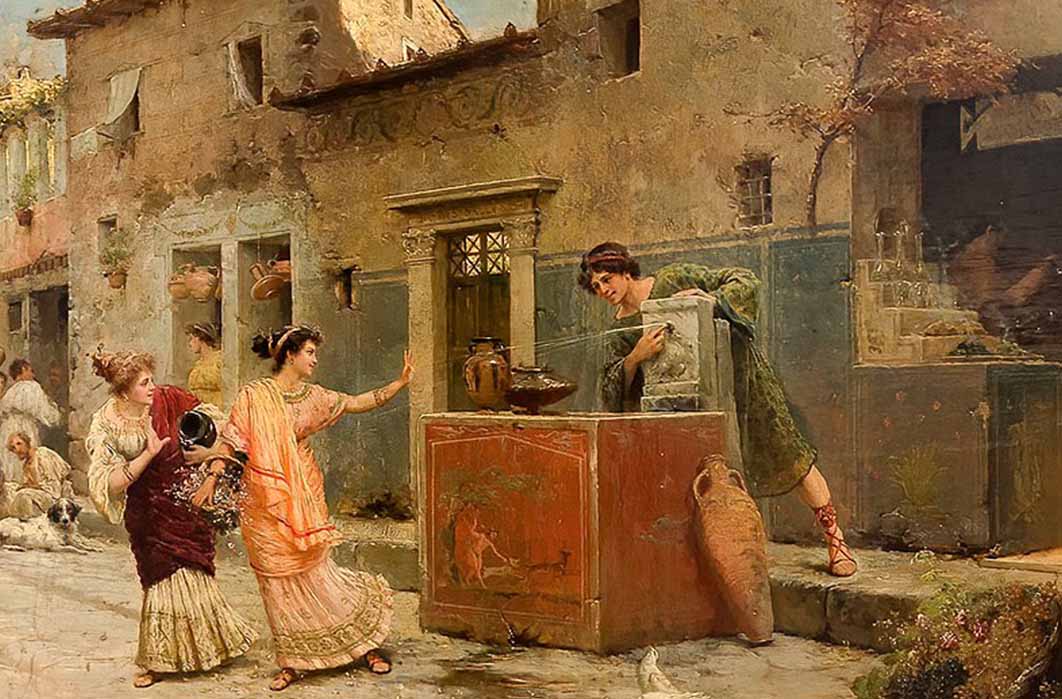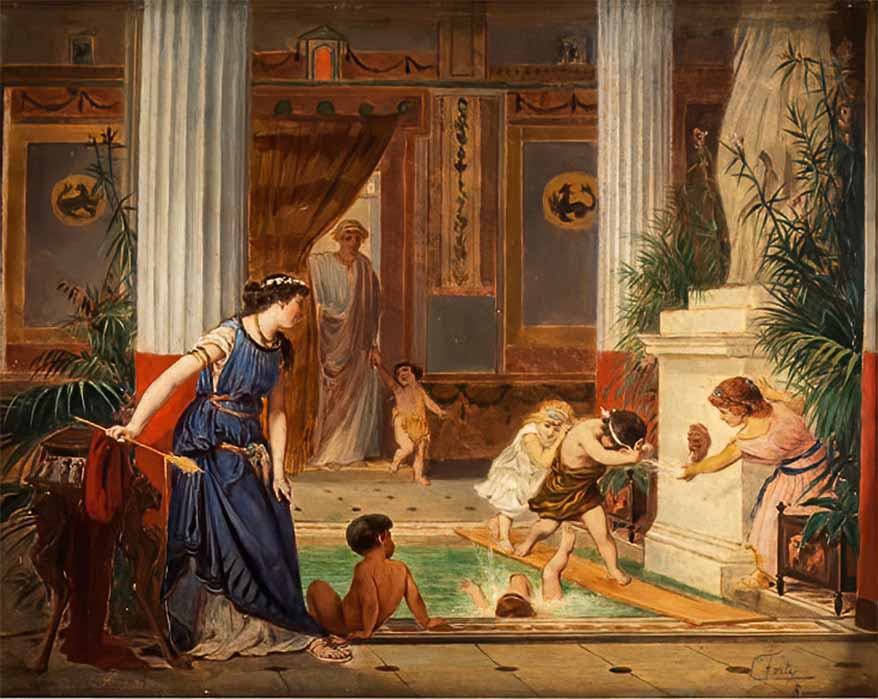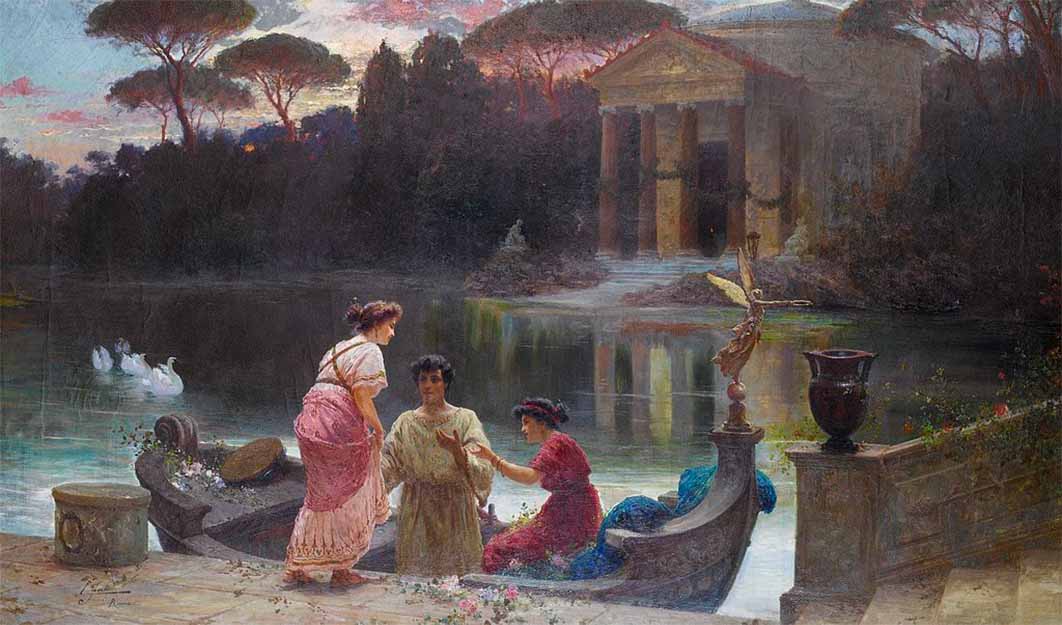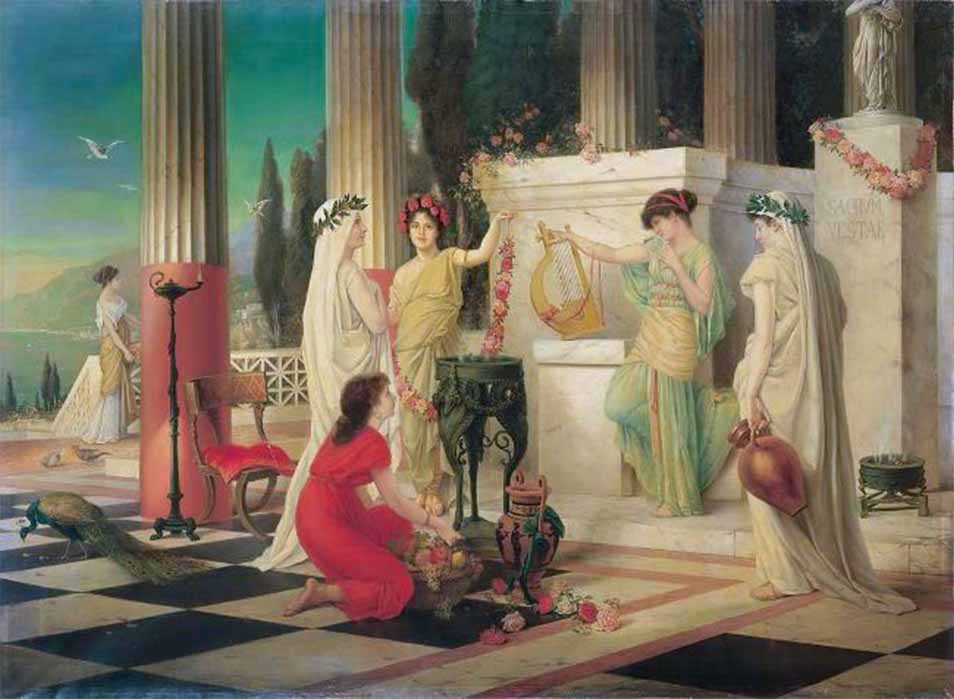
Matrons, Plebeians And Prostitutes, The Women Of Ancient Rome
Rome was the very essence of a male dominated society, being militaristic, proud, go-getting and determined on expansion. The man of the house, the Paterfamilias, was the head of the family with absolute control over his wife and children, and in earlier times he even had the right to kill, in certain circumstances, without suffering punishment for it. The Roman woman of status carried the feminine form of her family’s name, even if there were several daughters within that family. The daughters would be differentiated by diminutives or by nicknames. This was further evidence of the lack of individuality allowed to women. So where did the Roman woman fit in, both within the family unit and in the wider social world?

Roman children enjoying a bath in an affluent private villa, by Ettore Forti (19th century) (Public Domain)
Roman Children
As a child she would be taught obedience and her duty towards her natural family, which carried the expectation that she would do nothing to disgrace herself or them. If from a wealthy family she would have her marriage arranged for that family’s political or financial benefit, with sentiment pushed aside, and it would be an arrangement from which children, to carry on the name of the husband’s family, would be expected. If the marriage proved to be barren, then the husband could “adopt” a son to carry on the family name, often from another branch of the same family. Adopting a daughter would have been very unlikely.
Adopting a baby was also less likely to be agreed, as the Romans, essentially pragmatic, preferred to see what they were getting, what the young man to be adopted was likely to become, and whether he would be a suitable family heir, therefore the boy would usually be an adolescent. Daughters were certainly useful in furthering the family’s fortunes through their marriages, when they were of age to leave their paternal home.

An evening at the temple, by Ettore Forti (19th century) (Public Domain)
Vestal Virgins
The only women in ancient Rome who were sui iuris or in their own hand, were the Vestal Virgins. Contrary to popular misconceptions, there were only ever six of these privileged women at any one time. They were chosen as small girls, from prominent families, and their lives would be protected and controlled by the Pontifex Maximus, under whose jurisdiction they fell. They would serve as Vestals for a required time of 30 years, during which time a dowry would be provided for them, either from their birth family or from the State itself if necessary, of which a substantial sum of money was invested for them, to ensure that their retirement would be comfortable. However, they were not obligated to retire at the end of their time of service, if they preferred to remain within the Domus Vestae, and some Vestals spend their lifetimes in service. One of these long serving ladies was Junia Torquata who died as a Vestal, having served for 64 years. If a Vestal chose to leave at the end of the 30-year term, she would still be a relatively young woman, and she would even be legally free to marry if she chose to do so, however the marriage of Vestals was fairly rare, as to marry one of the ladies who had been dedicated to the goddess was considered to be unlucky.

In the Temple of Vesta by Constantin Hölscher (1902) Villa Grisebach (Public Domain)




